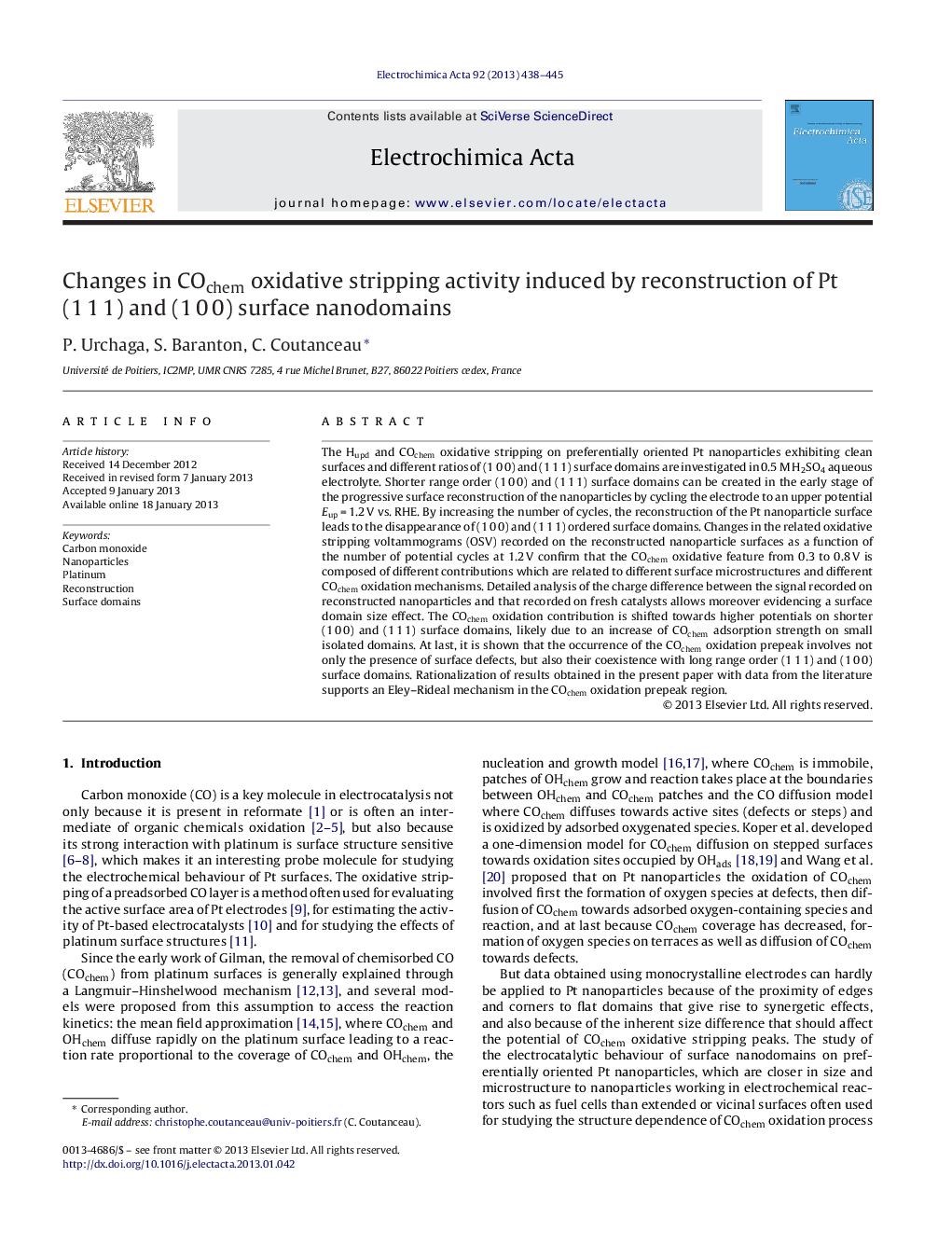| Article ID | Journal | Published Year | Pages | File Type |
|---|---|---|---|---|
| 6618219 | Electrochimica Acta | 2013 | 8 Pages |
Abstract
The Hupd and COchem oxidative stripping on preferentially oriented Pt nanoparticles exhibiting clean surfaces and different ratios of (1 0 0) and (1 1 1) surface domains are investigated in 0.5 M H2SO4 aqueous electrolyte. Shorter range order (1 0 0) and (1 1 1) surface domains can be created in the early stage of the progressive surface reconstruction of the nanoparticles by cycling the electrode to an upper potential Eup = 1.2 V vs. RHE. By increasing the number of cycles, the reconstruction of the Pt nanoparticle surface leads to the disappearance of (1 0 0) and (1 1 1) ordered surface domains. Changes in the related oxidative stripping voltammograms (OSV) recorded on the reconstructed nanoparticle surfaces as a function of the number of potential cycles at 1.2 V confirm that the COchem oxidative feature from 0.3 to 0.8 V is composed of different contributions which are related to different surface microstructures and different COchem oxidation mechanisms. Detailed analysis of the charge difference between the signal recorded on reconstructed nanoparticles and that recorded on fresh catalysts allows moreover evidencing a surface domain size effect. The COchem oxidation contribution is shifted towards higher potentials on shorter (1 0 0) and (1 1 1) surface domains, likely due to an increase of COchem adsorption strength on small isolated domains. At last, it is shown that the occurrence of the COchem oxidation prepeak involves not only the presence of surface defects, but also their coexistence with long range order (1 1 1) and (1 0 0) surface domains. Rationalization of results obtained in the present paper with data from the literature supports an Eley-Rideal mechanism in the COchem oxidation prepeak region.
Related Topics
Physical Sciences and Engineering
Chemical Engineering
Chemical Engineering (General)
Authors
P. Urchaga, S. Baranton, C. Coutanceau,
